Spring gardeners: Your winter break is over
It's not too early to start your spring garden.
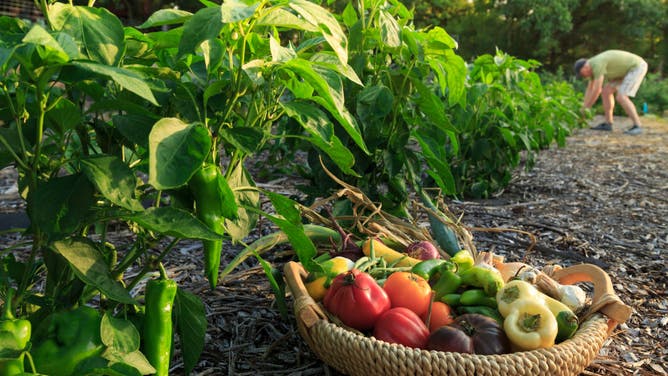
Garden to table: now is the time to start spring gardens.
(Jumping Rocks/Education Images/Universal Images Group via Getty Images / Getty Images)
April showers bring May flowers but those with green thumbs know a great spring garden starts before that. Even if your yard is still covered in snow, it's time for the amateur gardener to get started.
Know your zone
"Know your zones," said Home Depot garden expert Danny Watson. "There's nothing more frustrating and more discouraging than starting to plant a garden whether it be vegetables, flowers or landscape and getting the wrong plants…that don’t do well."
Learn your plant hardiness zone number, established by the U.S. Department of Agriculture. It’s based on weather and climate where you live including last freeze/frost dates, the average amount of sun per season and the average amount of rain. Look on the seed or plant packaging to learn which plants are optimal for which zones.

Tomatoes, peppers and eggplants soaking in the sun.
(Photo By Harold Hoch/MediaNews Group/Reading Eagle via Getty Images / Getty Images)
Get your ground ready
Map out your garden in a spot that gets at least of six hours of sun per summer day to plant your garden. Remember, some trees don't have leaves right now so estimate where the shade will be with a full canopy.
"I always say good soil is like the insurance on your plants that that ensures they are going to do well," Watson said. "If you spend all this money on plants, but you don't buy good soil amendments, plants will struggle. Let's face it, wherever you live, soils all are lacking something."
Start prepping soil by adding soil amendments like peatmoss to hold moisture in warm climates or inches of organic material to help soil high in clay drain. Your county’s cooperative extension office can test your soil. They will also suggest additives along with your local garden center.
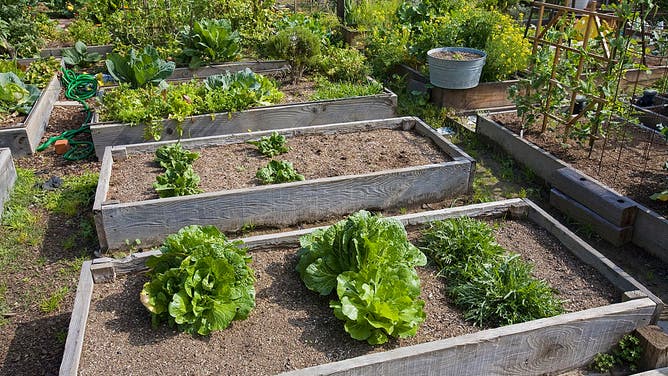
Raised bed and container gardening have become popular.
(Citizen of the Planet/Education Images/Universal Images Group via Getty Images / Getty Images)
"But, I'll tell you the trend has moved to container gardening and to raised beds," Watson said. "We have so many issues with our soil wherever we live. You're going to have perfect soil because the bed is going to be filled with the best."
Check out pre-cut beds that you fill with purchased soil mixture. Whether you build your own beds or use a kit, lay down a weed cloth over your yard before filling with soil. The cloth blocks weeds and insects.
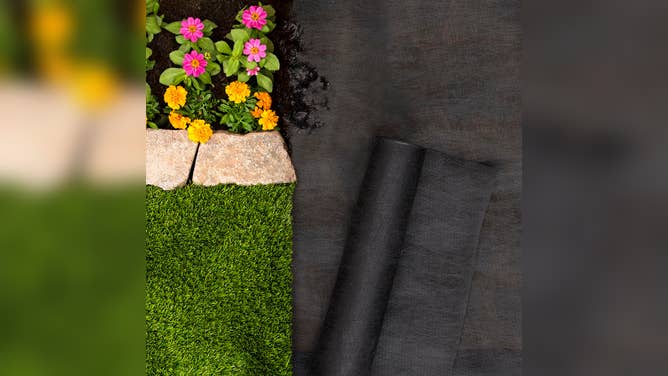
Roll out weed roll under your raised beds to cut down on weeds and insects.
(The Home Depot)
"I have had the best tomatoes, the best eggplant, the best peppers because it's all grown in great soil that I filled," Watson stated about his previous raised gardens. "You'll be shocked at how much you can get out of a raised bed. And the nice thing is you don't have to do all that digging and amending."
The garden expert said if the soil has enough nutrients, you won’t need to worry about fertilizing for at least a month.
Start your garden inside right now
"A good rule of thumb is not to plant until two weeks after your last freeze date," Watson said. "Especially when we're talking about veggies and annuals and soft, tender things."
WHEN IS THE AVERAGE FINAL FREEZE OF THE SEASON WHERE I LIVE?
"In colder climates, you can always start out with seed trays. And if you have kids, this is fun for them to watch, you know, things like peas, corn and sunflowers. If you want to do flowers, tomatoes, radishes, those are so easy, it's like failure-free."
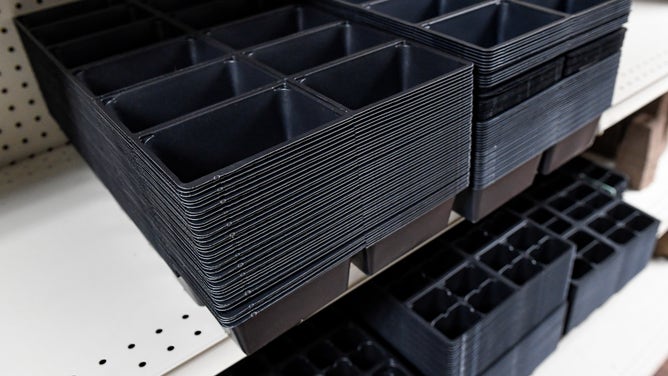
Seed trays come in many shapes and sizes.
(Photo by Ben Hasty/MediaNews Group/Reading Eagle via Getty Image / FOX Weather)
Put a pinch of seeds in each cup 30-45 days before your last freeze date and place the tray on a south-facing windowsill. After the plants grow two to three leaves each, you can separate the seedlings and plant in biodegradable pots that will still enjoy the windowsill. Transplant the seedling in the pot into your garden. The pots actually dissolve in soil and have their own fertilizer.
"I cheat, I never put one seedling in [a pot] just in case we lose it I have a backup," admits Watson. "Two plants growing side by side are not going to compete too bad with each other."
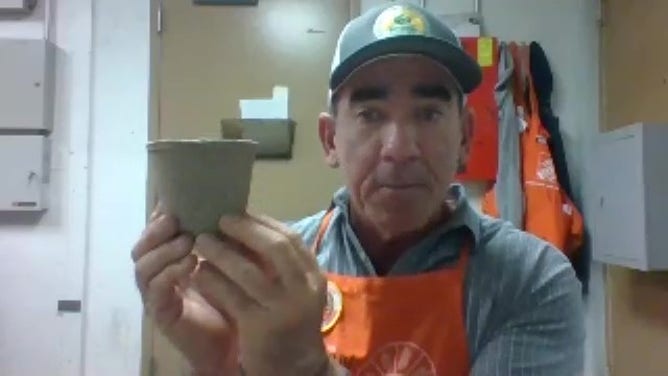
Danny Watson, garden expert with the Home Depot, shows a biodegradable pot that can be planted with the seedling into a garden.
"Seeds are like a dollar, two no more than three dollars a pack," said Watson about starting your own seeds instead of buying established plants. "You're getting a whole lot of seeds when you look at the cost-effectiveness of going this route. It's really smart."

(Photo by Ben Hasty/MediaNews Group/Reading Eagle via Getty Images / Getty Images)
Coming out party – two weeks after the last freeze
Two weeks after the last freeze, your seedlings are ready to make a grand entrance outdoors. Don’t plant them directly into your garden though.
"The day that you decide to go out, don't go directly in the full sun. Go to a shady spot. Get them acclimated," warned Watson. "I would recommend taking these seedlings out for three or four hours a day in that shade. Then after a few days of that, then you can move them in, so there's no shock on the plant. "
"I'll tell you a little secret I like to cover this rim when I plant," said Watson about the biodegradable pots. "What I found is if you leave this [rim] above the ground, it dries your plan out."
If you buy established plants from a nursery, check out the roots. If they are tightly bound in the shape of the container, break up the roots with your hands or scoring them for better rooting.
What to plant first
Plant leafy greens outside first.
"Your leafy veggies love cool weather, love that early spring. And honestly, most of them can take a little bit of frost," Watson said. "We're talking about lettuce, collards, cabbage, chard even broccoli… all of those like cool nights. The only one I would wait on are tomatoes. I've noticed if we do get some cold nights, it really messes them up and sometimes they never recover."

(Photo by Michael Bradley/Getty Images / Getty Images)
If you have concerns, the expert recommends planting the heat-loving tomatoes in five-gallon buckets. You can bring then in during a cold snap (40 degrees or below) and still transplant many weeks later.
If temperatures drop into the 30s, protect the rest of your outdoor garden with a breathable sheet, not plastic. Don’t let the sheet sit directly on the plants and anchor the edges with rocks or bricks.
FOX Weather will have tips to keep your garden green and producing all season long.